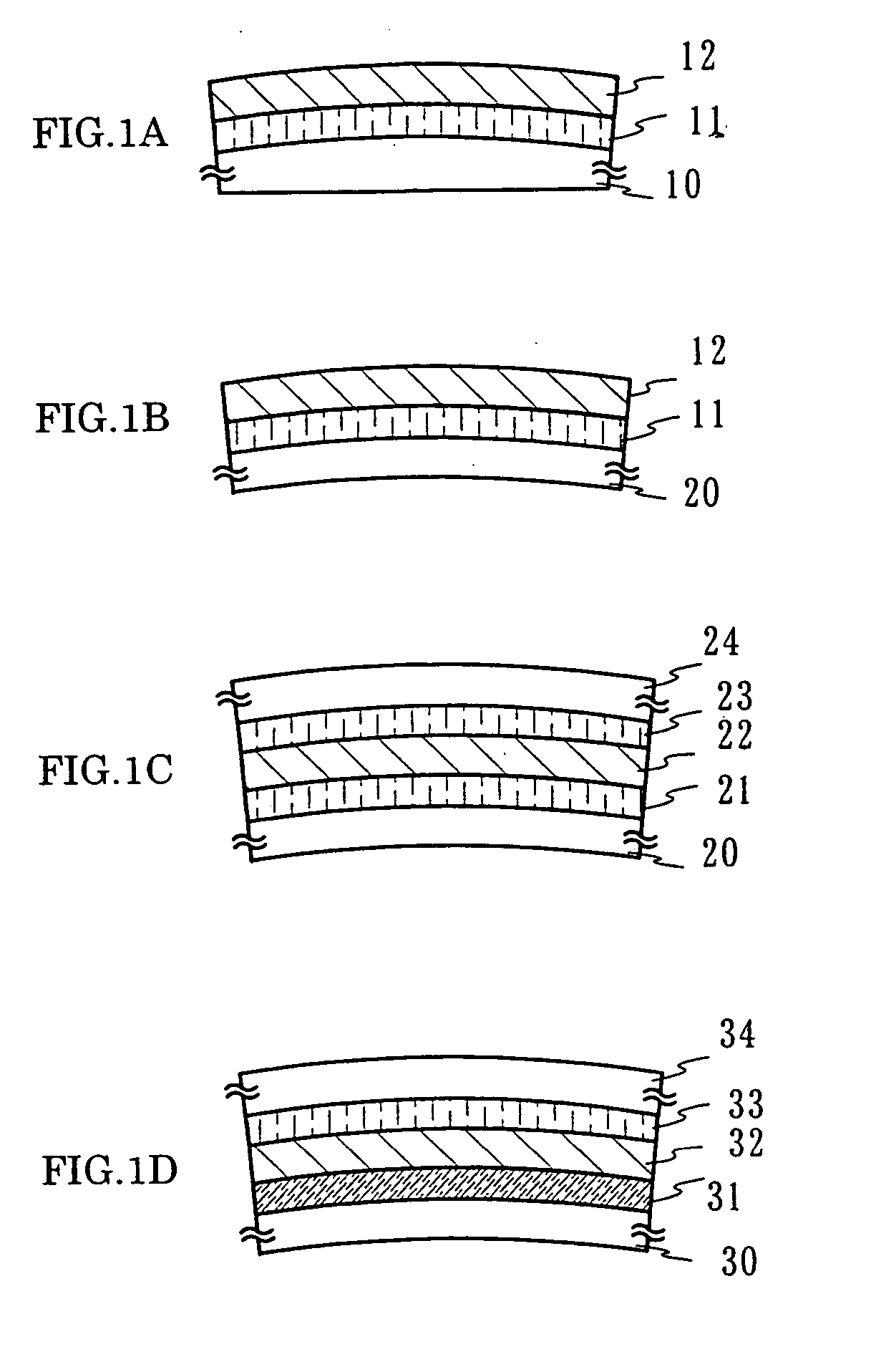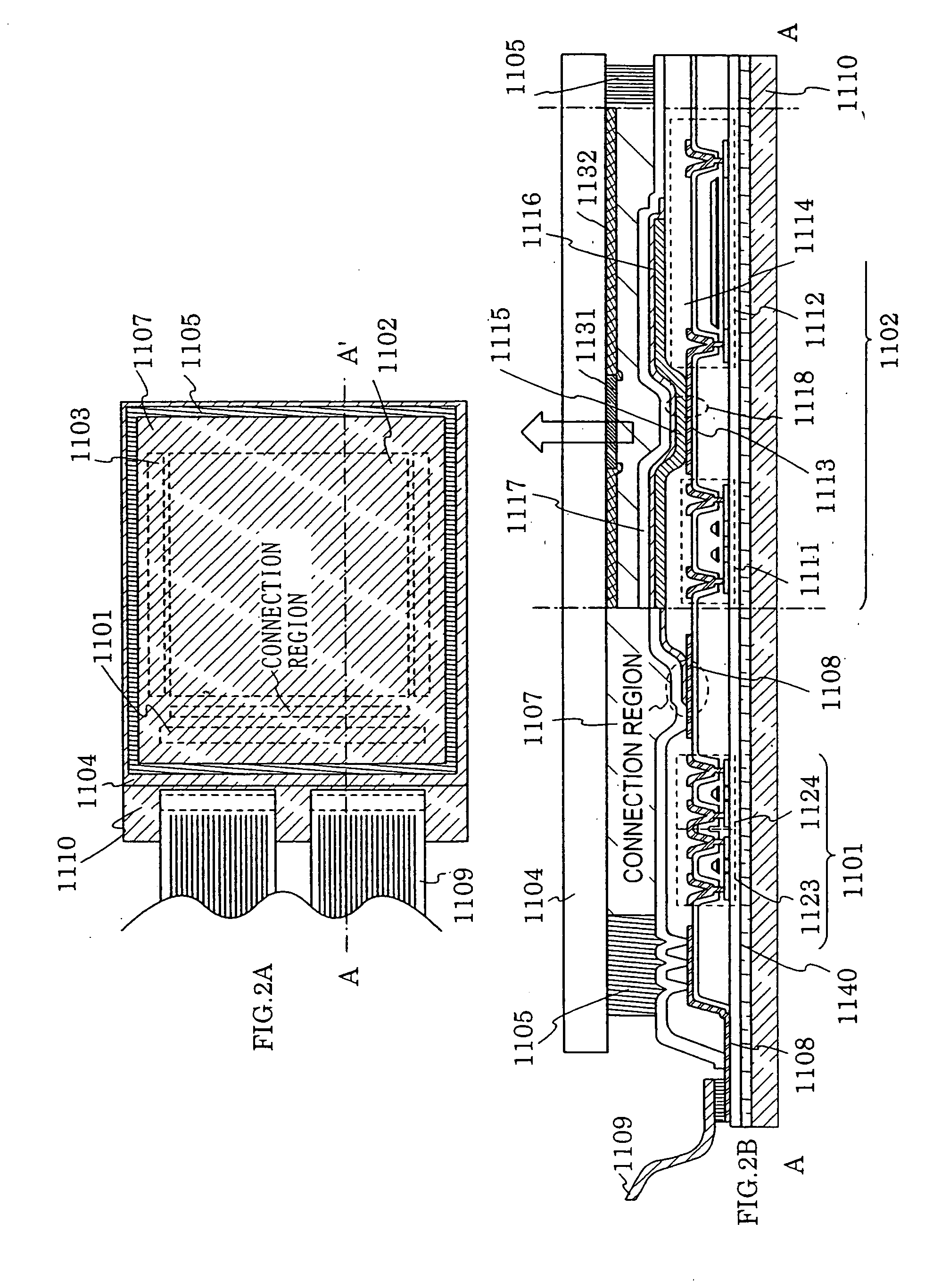Semiconductor apparatus and fabrication method of the same
a technology of semiconductors and fabrication methods, applied in semiconductor/solid-state device details, identification means, instruments, etc., can solve the problems of easy cracking and heavy, glass substrates, quartz substrates, etc., and achieve the effect of preventing deterioration
- Summary
- Abstract
- Description
- Claims
- Application Information
AI Technical Summary
Benefits of technology
Problems solved by technology
Method used
Image
Examples
embodiment mode 1
[0084] An example of bonding an insulating substrate having high thermal conductivity or a substrate to a release layer (including a device) that is separated by peeling-off method will be described in this embodiment mode.
[0085] In FIG. 1A, reference numeral 10 denotes an insulating substrate having thermal conductivity; 11, an adhesive; and 12, a release layer (including a device). The release layer 12 includes a semiconductor device formed on a substrate (not shown) in advance. The release layer 12 is separated from a substrate by a peeled-off method and bonded to the substrate 10 with the adhesive 11.
[0086] Specified quantity of powder such as Al, Mg, ceramics, or the like, and powder of a low-melting metal (lead-free solders) are mixed into polyphenylene sulfide or the like as thermoplastic resin, and the mixture is pelletized. The resulted pellets may be formed into the substrate 10 having a curved surface by injection molding process or compression molding process. The low-...
embodiment mode 2
[0094] An example of manufacturing an active matrix light emitting apparatus will be described with reference to FIG. 3 in this embodiment mode 2.
[0095] The present invention can be applied to an active matrix light-emitting apparatus, but not exclusively, any light-emitting device as long as that has a layer containing an organic compound such as a passive matrix light-emitting apparatus for a color display panel, a surface luminous, or an area color light-emitting apparatus for electric spectaculars device.
[0096] First, a device is formed on a glass substrate (a first substrate 300). A metal film 301, which is a tungsten film (having a thickness ranging from 10 to 200 nm, preferably, from 50 to 75 nm) here, is formed on the glass substrate by sputtering, and an oxide film 302, which is a silicon oxide film (having a thickness ranging from 150 to 200 nm) here, is stacked thereon without exposing to the air. The tungsten film and the silicon oxide films are formed over the edge po...
embodiment mode 3
[0122] An example of a method for manufacturing a light-emitting apparatus in which light generated in a light-emitting device is extracted through a first electrode will be described. Since partway of this embodiment mode is the same as Embodiment Mode 2, further explanation will be omitted, and like components are denoted by like numerals as of Embodiment Mode 2.
[0123] The process up to peeling-off the first substrate is the same as Embodiment Mode 2. Note that a transparent conductive film is used for a first electrode 304 in order to transmit light.
[0124] When the state shown in FIG. 4D is achieved according to Embodiment Mode 2, a transparent plastic substrate 412 is bonded thereto with an adhesive 411 (FIG. 4E).
[0125] A second substrate 308 is separated from the two-sided tape 307 (FIG. 4F).
[0126] Then, the two-sided tape 307 is removed (FIG. 4G).
[0127] And then, the film formed of water-soluble resin 306 is melted by water and removed (FIG. 4H). If residue of the water-s...
PUM
| Property | Measurement | Unit |
|---|---|---|
| thickness | aaaaa | aaaaa |
| thickness | aaaaa | aaaaa |
| thickness | aaaaa | aaaaa |
Abstract
Description
Claims
Application Information
 Login to View More
Login to View More - R&D Engineer
- R&D Manager
- IP Professional
- Industry Leading Data Capabilities
- Powerful AI technology
- Patent DNA Extraction
Browse by: Latest US Patents, China's latest patents, Technical Efficacy Thesaurus, Application Domain, Technology Topic, Popular Technical Reports.
© 2024 PatSnap. All rights reserved.Legal|Privacy policy|Modern Slavery Act Transparency Statement|Sitemap|About US| Contact US: help@patsnap.com










